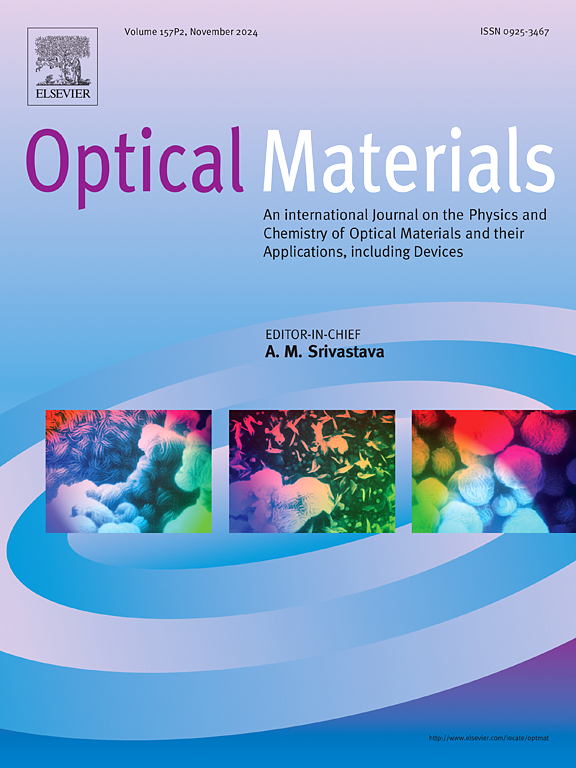聚苯乙烯涂层和独立板的加工和表征
IF 4.2
3区 材料科学
Q2 MATERIALS SCIENCE, MULTIDISCIPLINARY
引用次数: 0
摘要
本研究采用浸涂法制备了聚苯乙烯(PS)涂层。利用扩展的斯瓦内普尔方法测定了涂层的折射率、色散和厚度。该方法考虑了在基材的正面和背面涂覆的涂层以及涂层厚度的变化。通过调整溶液的摩尔浓度、基底的提取速率和涂层工艺的迭代次数,研究了对涂层厚度的影响。这些发现被用于创建一个经验模型,该模型允许使用实验参数计算最终涂层的厚度。在石英载玻片(49 mm × 49 mm × 1 mm)表面涂覆6.1(±0.2)μm的PS层,用独立的方法对其厚度进行验证,验证了经验关系的有效性。独立PS板也生产和表征。这些板是用溶液铸造法制造的。所得PS样品在紫外、可见光和近红外波段具有较高的透过率,平均吸收系数为1.7±0.9 cm−1。因此,它们非常适合用于某些光学应用。本文章由计算机程序翻译,如有差异,请以英文原文为准。

Processing and characterisation of polystyrene coatings and free-standing plates
In this study, polystyrene (PS) coatings were prepared on quartz substrates by using a dip coating method. The refractive index, dispersion, and thickness of the coatings were determined using an extended Swanepoel's method. This method accounted for coatings coated on the front and back sides of the substrate and thickness variation across the coating. By adjusting the solution's molarity, the substrate's rate of withdrawal, and the number of coating process iterations, the impact on the coating's thickness was investigated. These findings were used to create an empirical model that allowed the thickness of the final coatings to be calculated using the experimental parameters. A quartz slide (49 mm × 49 mm x 1 mm) was coated with a 6.1 (±0.2) μm layer of PS. The thickness was verified using an independent method which demonstrated the validity of the empirical relation. Free-standing PS plates were also produced and characterised. These plates were made utilising a purposely made cast using the solution casting method. The PS samples produced have high transmittance in the UV, visible, and near-infrared wavelength ranges with an average absorption coefficient of 1.7 ± 0.9 cm−1. Because of this, they are well suited for use in some optical applications.
求助全文
通过发布文献求助,成功后即可免费获取论文全文。
去求助
来源期刊

Optical Materials
工程技术-材料科学:综合
CiteScore
6.60
自引率
12.80%
发文量
1265
审稿时长
38 days
期刊介绍:
Optical Materials has an open access mirror journal Optical Materials: X, sharing the same aims and scope, editorial team, submission system and rigorous peer review.
The purpose of Optical Materials is to provide a means of communication and technology transfer between researchers who are interested in materials for potential device applications. The journal publishes original papers and review articles on the design, synthesis, characterisation and applications of optical materials.
OPTICAL MATERIALS focuses on:
• Optical Properties of Material Systems;
• The Materials Aspects of Optical Phenomena;
• The Materials Aspects of Devices and Applications.
Authors can submit separate research elements describing their data to Data in Brief and methods to Methods X.
 求助内容:
求助内容: 应助结果提醒方式:
应助结果提醒方式:


